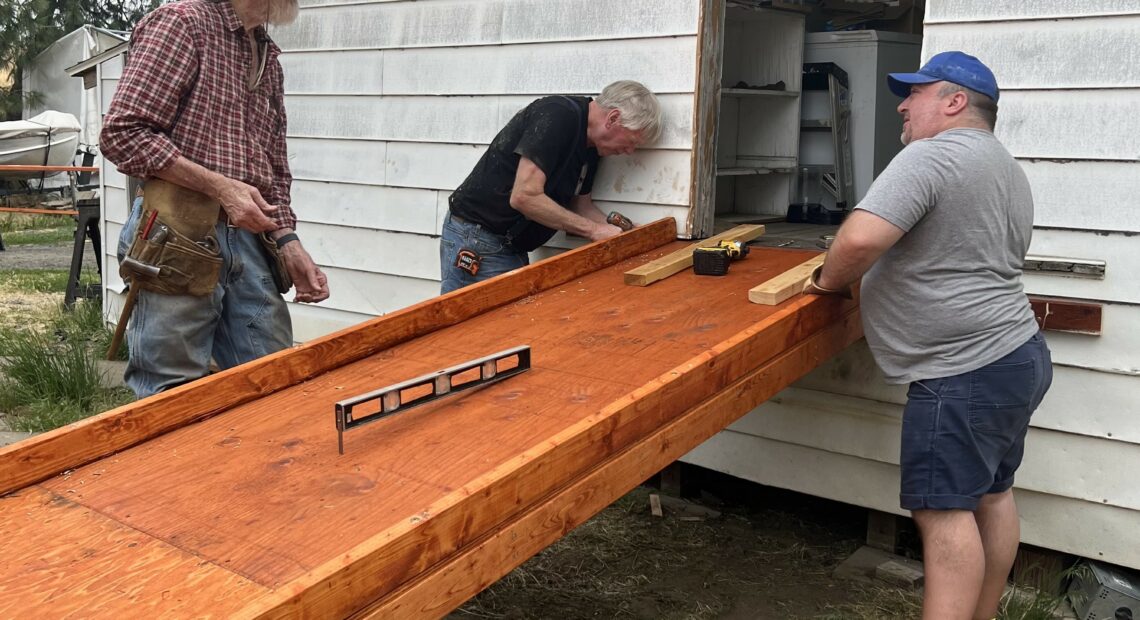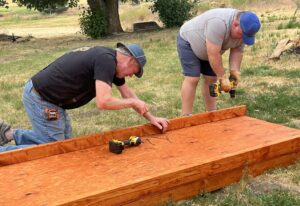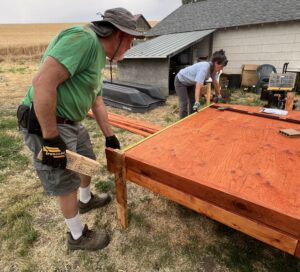
Habitat for Humanity volunteers are making the Palouse more accessible
Listen
(Runtime 3:49)
Read
About 6 miles west of Pullman, Washington, there’s a small farmhouse overlooking the Palouse. It’s a quaint dwelling with a big front porch and a long driveway. At the request of the homeowner, Palouse Habitat for Humanity was on-site installing a wooden wheelchair ramp coming out of the back door.
Among those there was Jennifer Wallace, the nonprofit’s executive director.
“For folks who can’t afford to move into a home that’s designed to meet their mobility challenges, we want to be there to help,” Wallace said.
While Palouse Habitat for Humanity only builds two houses every year, they can install upwards of 40 ramps in existing homes. There are about 30 ramps currently deployed in Latah and Whitman counties.
Wallace describes the ramps program as a sort of lending library.
“We don’t charge for them,” she said. “They are deployed as long as the homeowner needs.”
The organization makes two types of ramps: aluminum and wood. According to Wallace, the metal ramps can cost $2,500, while the wood ones only cost up to $500.

Volunteers attach curbing to the ramp. (Credit: Jennifer Wallace)
‘A rather important part of the mission’
Brent Bradberry has been volunteering with Habitat for about 15 years. He said after a few years of retirement, he wanted to pitch in.
“It was fun, I learned a lot, and enjoyed it,” Bradberry said. “Now I have nice fresh air, good exercise, good company.”
He was in Pullman assisting with the installation. He says the ramps project is more important than some people might think.
“This is a side gig, some folks would say, but actually, it’s turned into a rather important part of the mission,” he said.

Volunteer Brent Bradberry, left, ensures the ramp is at the correct grade. (Credit: Jennifer Wallace)
In the backyard, there were two huge 8-foot sections of the wooden ramp pre-assembled. There were also big buckets of hand and power tools, with trays of screws and nails organized with plastic dividers. Volunteers had removed the existing back stairs, creating about a 4-foot drop from the back door to the ground.
Chris Parodi, who is volunteering with the Moscow Central Lions Club, was connecting two large sections of the ramp. Parodi works as an IT specialist and doesn’t have a background in construction. However, Wallace said that’s typical.
“The bulk of our volunteers are folks who have no experience at all. If folks show up and they just want to learn, we teach them,” she said.
Wallace describes the nonprofit as one of the best kept secrets on the Palouse — while some area groups know about them, a lot of people are unaware about all the work they do.
She added that the organization depends on donations and volunteer labor. Wallace hopes once Palouse Habitat for Humanity starts advertising more broadly, more work requests will surface.
And Wallace has a message to those who are considering volunteering:
“At the end of the day, you know you’ve made a difference,” she said.
















